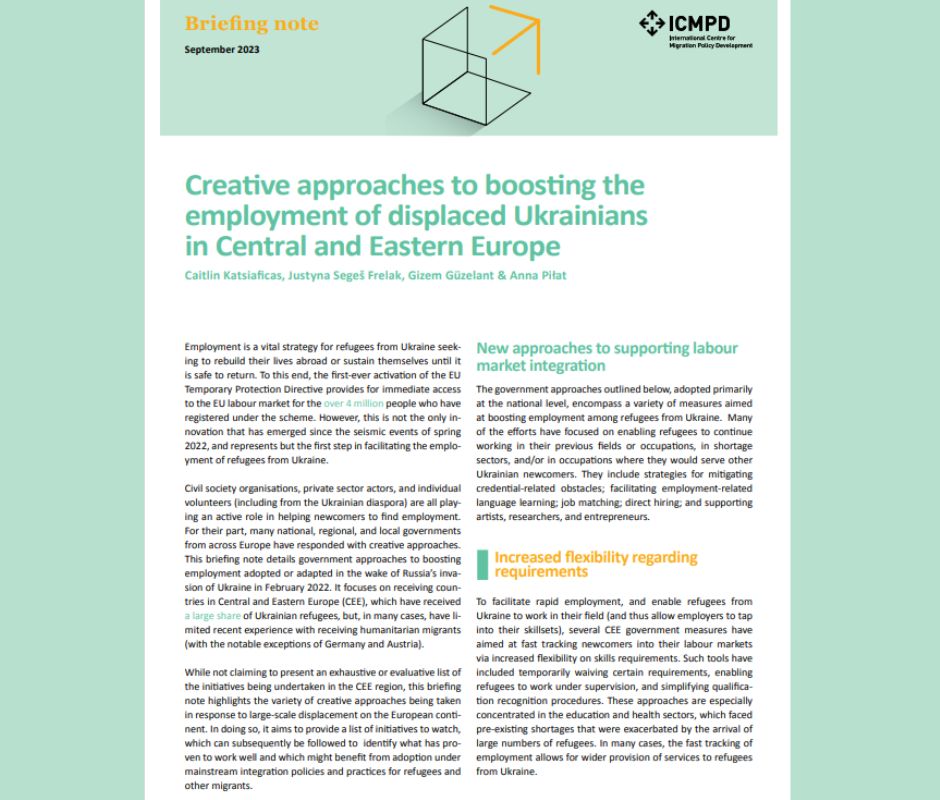Employment is a vital strategy for refugees from Ukraine seeking to rebuild their lives abroad or sustain themselves until it is safe to return. To this end, the first-ever activation of the EU Temporary Protection Directive provides for immediate access to the EU labour market for the over 4 million people who have registered under the scheme. However, this is not the only innovation that has emerged since the seismic events of spring 2022, and represents but the first step in facilitating the employment of refugees from Ukraine.
This Briefing note, published in September 2023 on the website www.icmpd.org, and prepared by Caitlin Katsiaficas, Justyna Segeš Frelak, Gizem Güzelant & Anna Piłat details government approaches to boosting employment adopted or adapted in the wake of Russia’s invasion of Ukraine in February 2022 and focuses on receiving countries in Central and Eastern Europe (CEE), which have received a large share of Ukrainian refugees, but, in many cases, have limited recent experience with receiving humanitarian migrants (with the notable exceptions of Germany and Austria).
While not claiming to present an exhaustive or evaluative list of the initiatives being undertaken in the CEE region, this briefing note highlights the variety of creative approaches being taken in response to large-scale displacement on the European continent. In doing so, it aims to provide a list of initiatives to watch, which can subsequently be followed to identify what has proven to work well and which might benefit from adoption under mainstream integration policies and practices for refugees and other migrants.
The government approaches outlined in this briefing, adopted primarily at the national level, encompass a variety of measures aimed at boosting employment among refugees from Ukraine. Many of the efforts have focused on enabling refugees to continue working in their previous fields or occupations, in shortage sectors, and/or in occupations where they would serve other Ukrainian newcomers.
They include strategies for:
- Mitigating credential-related obstacles;
- facilitating employment-related language learning;
- job matching;
- direct hiring; and
- supporting artists, researchers, and entrepreneurs.
Read in detail about each strategy and concrete examples from selected countries in the full briefing note on the ICMPD website.

